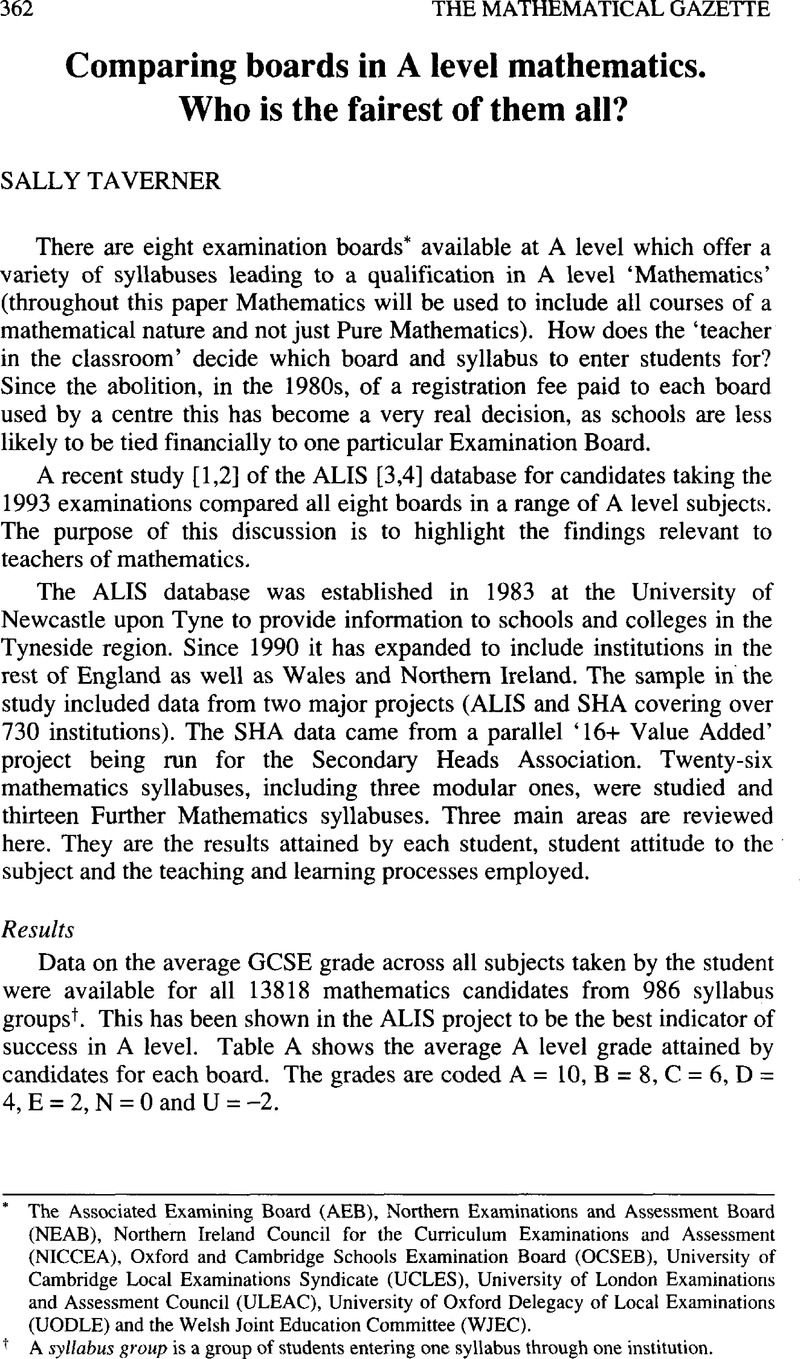No CrossRef data available.
Article contents
Comparing boards in A level mathematics. Who is the fairest of them all?
Published online by Cambridge University Press: 01 August 2016
Abstract
An abstract is not available for this content so a preview has been provided. Please use the Get access link above for information on how to access this content.

- Type
- Matters for debate
- Information
- Copyright
- Copyright © The Mathematical Association 1996
References
1.
Tymms, P. and Vincent, L., Comparing examination boards and syllabuses at A level: students’ grades, attitudes and perceptions of classroom processes (Technical Report), Belfast: NICCEA - available from the CEM Centre, Department of Education, University of Newcastle (1994).Google Scholar
2.
Curriculum, Evaluation and Management (CEM) Centre, Department of Education, University of Newcastle, Comparing examination boards and syllabuses at A level: students’ grades, attitudes and perceptions of classroom processes (Executive Summary), Belfast: NICCEA - available from the CEM Centre (1994).Google Scholar
3.
Fitz-Gibbon, C.T., The design of indicator systems – the role in education, Research Paper in Education
7(3) (1992) pp. 271–300.CrossRefGoogle Scholar
4.
Fitz-Gibbon, C.T., A level results in comprehensive schools: The Combse project, year 1, Oxford Review of Education
11 (1985) pp. 43–58.Google Scholar
5.
Aitken, M. and Longford, N., Statistical modelling issues in school effectiveness studies, Journal of the Royal Statistical Society, Series A 149(1) (1986) pp. 1–43.CrossRefGoogle Scholar


